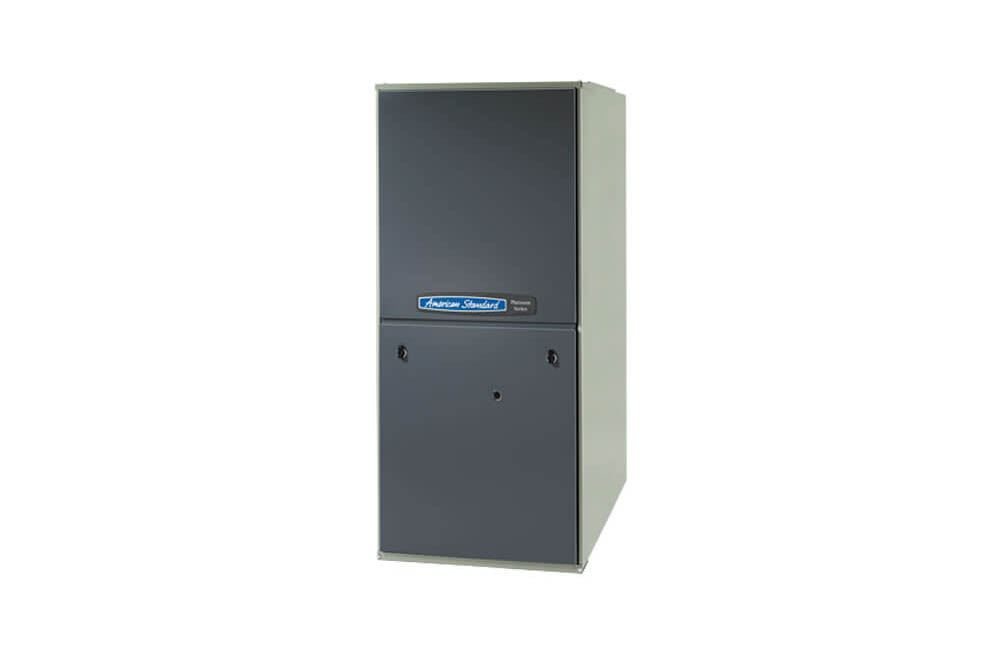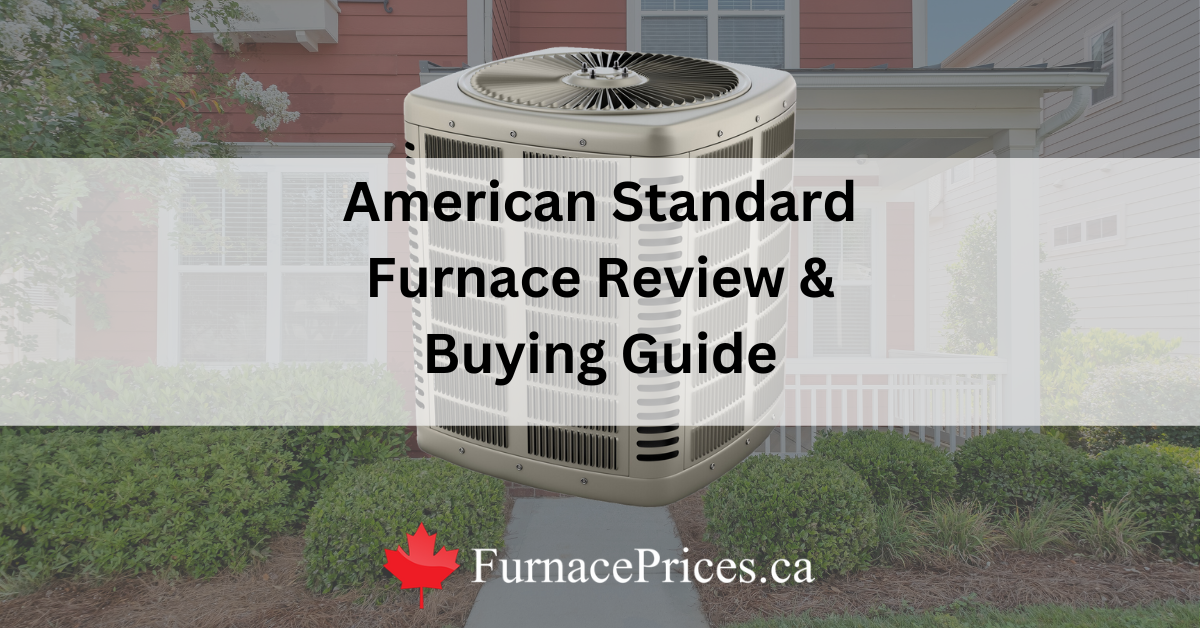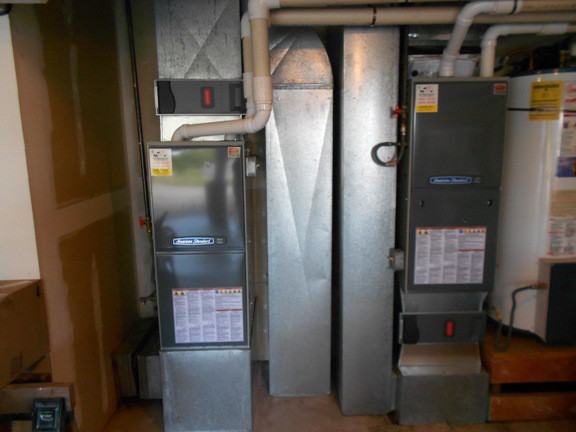American Standard Furnace Saint Cloud Mn

If you're a homeowner in Saint Cloud, MN, you know that a reliable furnace is essential for surviving our harsh winters. Many homeowners rely on American Standard furnaces for their heating needs. This guide provides insights into troubleshooting, maintaining, and repairing your American Standard furnace in Saint Cloud, MN. Whether you're a seasoned DIYer or a homeowner just looking to understand your system better, this information can help.
Understanding Your American Standard Furnace
American Standard offers a range of furnace models, each with varying features and energy efficiencies. Before attempting any repairs, it's crucial to understand your specific model. Locate the model number, usually found on a sticker inside the furnace cabinet. Common model numbers include, but aren't limited to, Freedom 80, Freedom 90, and Platinum series. Knowing your model is critical when ordering parts or consulting with a professional.
Safety First!
Always prioritize safety when working with your furnace. Before beginning any troubleshooting or repair, turn off the power to the furnace at the breaker box. Allow the unit to cool completely before touching any internal components. Never work on a gas furnace without proper ventilation. If you smell gas, immediately leave the area and contact your gas company or a qualified HVAC technician.
Common American Standard Furnace Problems
Here are some of the most common issues encountered with American Standard furnaces:
- Furnace Not Turning On: This is a frequent issue with many causes.
- Furnace Turning On and Off Repeatedly (Short Cycling): This can indicate overheating or other problems.
- Insufficient Heat: The furnace runs, but the house isn't getting warm enough.
- Blower Fan Issues: The fan isn't working correctly, or is making unusual noises.
- Unusual Noises: Banging, rattling, or squealing sounds coming from the furnace.
- Pilot Light Problems (If Applicable): The pilot light won't stay lit, or it's burning yellow instead of blue. (Note: Many modern furnaces use electronic ignition instead of a pilot light).
- Error Codes: The control board displays an error code, indicating a specific problem.
Troubleshooting and DIY Repairs
Many minor furnace issues can be resolved with basic troubleshooting. Here are some step-by-step guides to address common problems.
1. Furnace Not Turning On
- Check the Thermostat: Ensure the thermostat is set to "heat" and the temperature is higher than the current room temperature. Replace the thermostat batteries if necessary.
- Check the Breaker: Go to your electrical panel and ensure the breaker for the furnace is switched on. If it's tripped, reset it. If it trips again immediately, there's likely an electrical issue requiring professional attention.
- Check the Furnace Switch: There's usually a switch located on or near the furnace itself. Make sure it's in the "on" position.
- Check the Air Filter: A dirty air filter restricts airflow and can cause the furnace to overheat and shut down. Replace the filter with a clean one. Standard sizes are 16x25x1, 20x20x1, and 16x20x1. Make sure to buy the appropriate size filter and MERV rating recommended by the manufacturer.
- Check the Flame Sensor: (For furnaces with electronic ignition). The flame sensor detects whether the burner has ignited. A dirty flame sensor can prevent the furnace from staying lit. Locate the flame sensor (it's a thin metal rod near the burner), carefully remove it, and clean it with fine-grit sandpaper or steel wool. Reinstall the sensor and try restarting the furnace.
2. Furnace Short Cycling
Short cycling is when the furnace turns on and off too frequently.
- Check the Air Filter: Again, a dirty air filter is a prime suspect.
- Check the Overheat Switch: Some furnaces have a manual reset overheat switch. Look for a small button on the blower motor housing or near the burners. If you find one, press it to reset it. If it trips again, there's a more serious issue.
- Check for Blocked Vents: Ensure that all supply and return vents are open and unobstructed.
3. Insufficient Heat
- Check the Thermostat Calibration: Some thermostats can be slightly inaccurate. Consult your thermostat's manual for instructions on calibrating it.
- Check for Leaky Ductwork: Leaky ductwork can cause significant heat loss. Inspect the visible ductwork for any obvious leaks or tears. Seal any leaks with duct tape (foil tape is preferred) or mastic sealant.
- Check the Blower Fan Speed: Some furnaces have adjustable blower fan speeds. If the fan speed is too high, the air won't have enough time to heat up properly. Consult your furnace's manual for instructions on adjusting the fan speed. Caution: Improper fan speed settings can damage the furnace. If you are unsure, call a professional.
4. Blower Fan Issues
- Fan Not Running: Check the blower motor capacitor. A failing capacitor is a common cause of blower motor problems. Warning: Capacitors can store an electrical charge even when the power is off. Discharge the capacitor before handling it using a screwdriver with an insulated handle to short across the terminals.
- Noisy Fan: Loose fan blades, a worn-out blower motor, or debris in the fan housing can cause noise. Try tightening the fan blades. If the noise persists, the blower motor may need to be replaced.
5. Unusual Noises
- Banging: Often caused by ductwork expanding and contracting due to temperature changes. This is usually not a serious problem, but can be annoying. Ensure the ductwork is properly supported.
- Rattling: Could be loose screws, panels, or debris inside the furnace. Carefully inspect the furnace and tighten any loose components.
- Squealing: Usually indicates a worn-out blower motor or a failing bearing. Lubricating the motor bearings may help temporarily, but eventually the motor will need to be replaced.
When to Call a Professional HVAC Technician
While many minor furnace issues can be resolved with DIY troubleshooting, some problems require the expertise of a qualified HVAC technician. Here are some situations where you should always call a professional:
- Gas Leaks: If you smell gas, evacuate the area immediately and call your gas company or an HVAC technician.
- Electrical Issues: If you suspect an electrical problem beyond a tripped breaker, call an electrician or HVAC technician.
- Refrigerant Leaks: If your furnace uses refrigerant (common in heat pumps), refrigerant leaks require specialized equipment and training to repair.
- Complex Repairs: If you're not comfortable working with gas lines, electrical components, or other complex systems, it's best to leave the repair to a professional.
- You've Tried Everything and the Furnace Still Isn't Working: Sometimes, a problem requires specialized diagnostic tools and knowledge to identify and resolve.
Cost Estimates for Common American Standard Furnace Repairs in Saint Cloud, MN
The cost of furnace repairs can vary depending on the problem, the age of the furnace, and the HVAC contractor you choose. Here are some rough estimates for common repairs in the Saint Cloud, MN area. Note that these are just estimates, and the actual cost may vary.
- Air Filter Replacement: $10 - $30 (DIY)
- Flame Sensor Replacement: $100 - $200
- Blower Motor Capacitor Replacement: $150 - $300
- Blower Motor Replacement: $300 - $800
- Gas Valve Replacement: $250 - $500
- Igniter Replacement: $150 - $300
- Control Board Replacement: $300 - $700
- Heat Exchanger Replacement: $1000 - $2500 (Depending on accessibility and brand) Often, replacing the entire furnace is more cost effective if the heat exchanger is cracked.
Preventative Maintenance for Your American Standard Furnace
Regular maintenance can help prevent many common furnace problems and extend the life of your system. Here are some essential maintenance tasks:
- Replace the Air Filter Regularly: Check the filter monthly and replace it every 1-3 months, depending on usage and air quality.
- Schedule Annual Furnace Inspections: Have a qualified HVAC technician inspect and tune up your furnace annually. This includes cleaning the burners, checking the gas pressure, and inspecting the electrical connections.
- Keep the Area Around the Furnace Clear: Don't store anything flammable near the furnace.
- Ensure Proper Ventilation: Make sure that the furnace's intake and exhaust vents are clear of obstructions. Snow and ice can block these vents during the winter.
Finding a Reputable HVAC Technician in Saint Cloud, MN
If you need to call a professional, it's essential to find a reputable and qualified HVAC technician. Here are some tips:
- Ask for Recommendations: Ask friends, family, and neighbors for recommendations.
- Check Online Reviews: Read online reviews on websites like Google, Yelp, and the Better Business Bureau.
- Verify Licenses and Insurance: Make sure the technician is licensed and insured. In Minnesota, HVAC contractors are required to be licensed.
- Get Multiple Quotes: Obtain quotes from several different companies before making a decision.
- Ask About Experience: Inquire about the technician's experience working with American Standard furnaces.
By understanding your American Standard furnace and following these troubleshooting and maintenance tips, you can keep your home warm and comfortable throughout the Saint Cloud, MN winter. Remember to prioritize safety and call a professional when needed.










